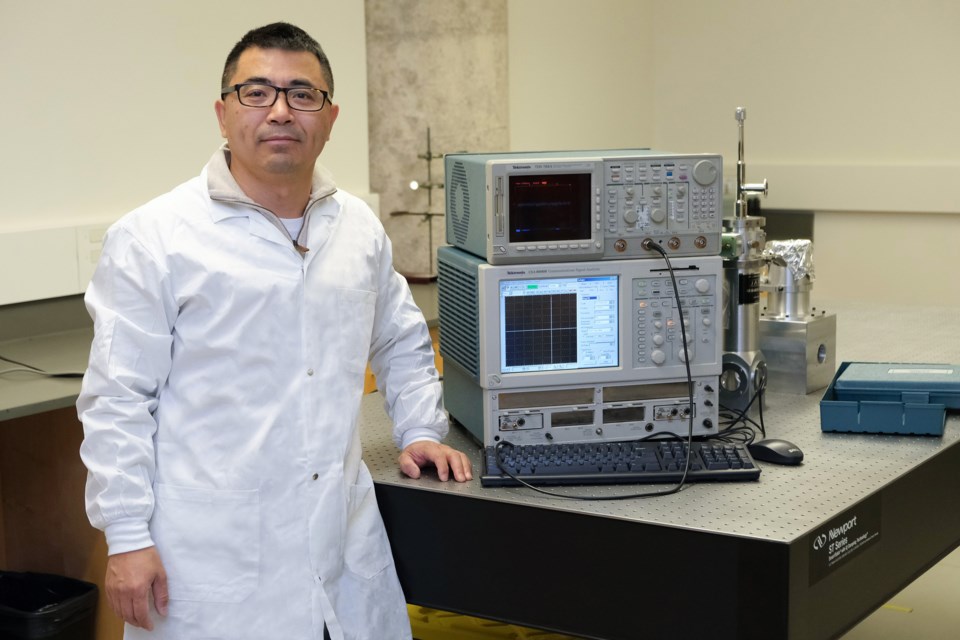NEWS RELEASE
BROCK UNIVERSITY
************************
As Earth Day nears, prompting people to reflect on their conservation efforts, an international expert in solar cell research at Brock University is working to make green energy more accessible to all.
Jianbo Gao, Assistant Professor in Brock’s Department of Chemistry and Affiliated Professor in the Yousef Haj-Ahmad Department of Engineering, is leading novel research in photovoltaics, a method of converting solar radiation into electricity.
One of the pioneers of quantum dot solar cells, Gao has seen his solar cell work certified by National Renewable Energy Laboratory (NREL) on the prestigious solar cell efficiency chart.
His research is challenging conventional silicon technology, which has been the dominant material used in solar panels for several decades, by introducing highly efficient solar absorbers, such as perovskite material, that are significantly less expensive.
Perovskite material can be easily applied to any surface using an ink jet printing process or spin-coating method. It can be uniformly printed on flexible rolls of film and applied to any surface, such as windows on buildings and cars, bus shelters, or even on people’s clothing and accessories.
“Its simple production and low cost make it highly efficient, accessible and affordable,” says Gao. “The average household electricity costs 15 cents per kilowatt-hour. The goal with this new material is to achieve less than one penny per kilowatt-hour.”
Gao’s research into perovskite as a solar absorber is published in the American Chemical Society’s journal ACS Nano and is conducted in collaboration with international partners from Clemson University and Lawrence Berkeley National Laboratory as well as the U.S.-based NREL, which is a world leader in solar cell research.
It is collaborations like these that will make his research sustainable, says Gao, who is currently pursuing new collaborations with Canadian and international organizations to further his research into a new generation of photovoltaics.
The new material being explored is less expensive than traditional silicon technology but also more efficient than perovskite photovoltaics.
“It’s double the efficiency, or even higher, while being incredibly affordable,” says Gao.
He offers the example of a satellite, which requires an extremely highly efficient solar cell to power it. One square metre of the type of solar cell currently used to power many satellites costs about US$5,000. The new material would be at least 10 times less expensive for the same size.
Gao says the new photovoltaic technology can also be semi-transparent, so not only can solar cells be integrated into building windows to power things, but they can also help shield light, which can help reduce unwanted heat and sun exposure.
Amidst climate change, a global energy crisis and worldwide efforts to reduce fossil fuel use, Gao says both novel materials he is researching can contribute to advancing renewable energy alternatives.
“Solar energy can power anything,” he says. “The impact of inventing new low-cost, highly efficient solar cell alternatives is profound and urgent. It could change the future of energy in Canada and address the worldwide energy shortage for humankind.”
************************
